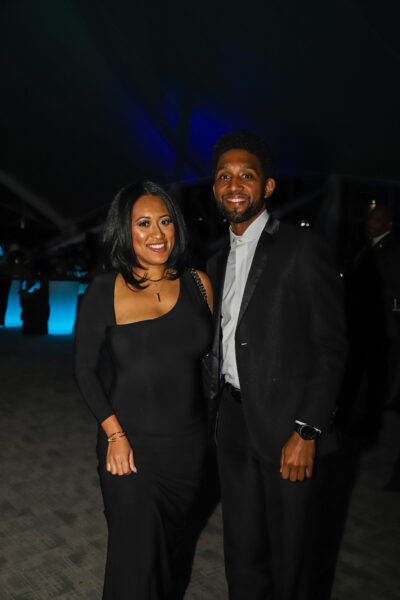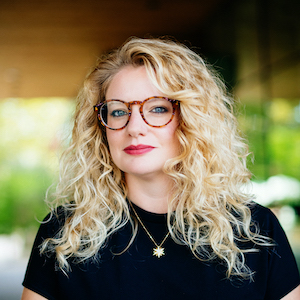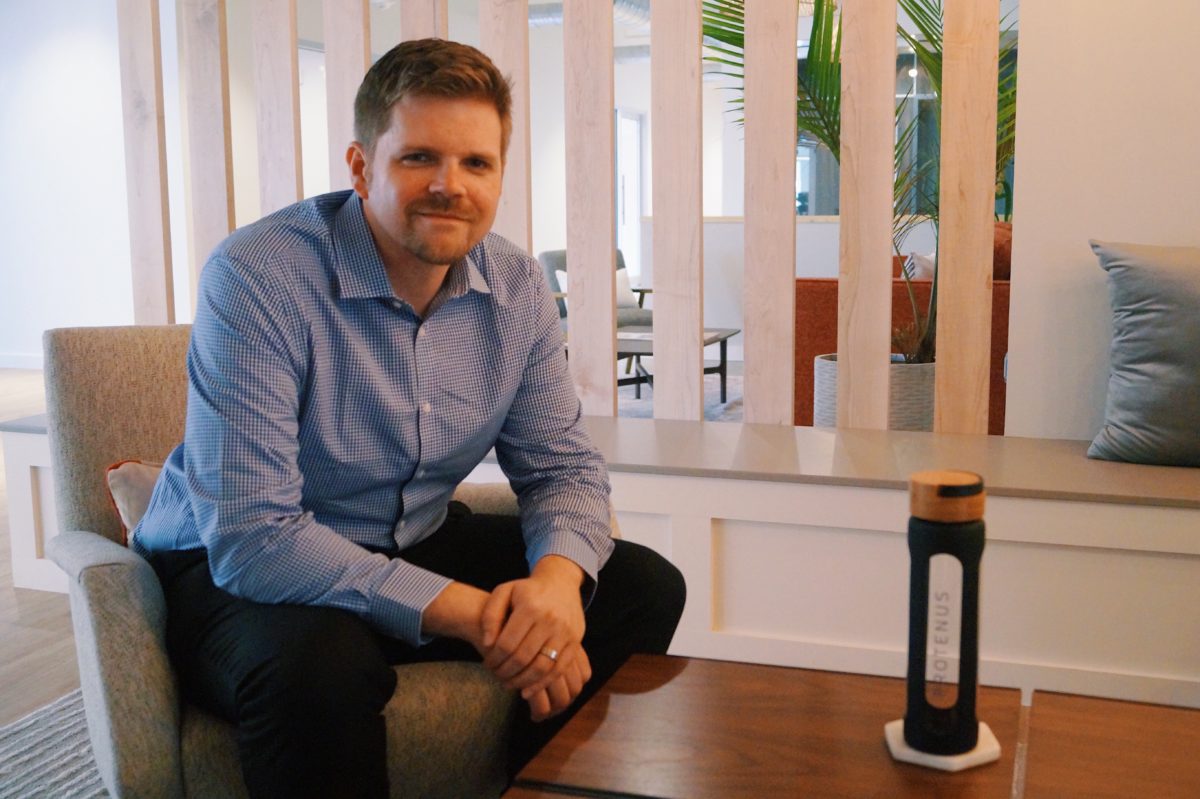This editorial article is a part of Technical.ly's Tech Stacks Month. Join Technical.ly at our annual Super Meetup on Aug. 8.
Chris Jeschke’s path into the startup world began with an unexpected outreach from an online advertising company. Following eight years at Advertising.com and four years at Booz Allen Hamilton, Jeschke is now CTO of Fells Point-based Protenus and building a team of next generation junior developers.
Jeschke attributes his success to the mentors and engineering leaders he was able to work with during his time at Advertising.com and Booz Allen Hamilton, helping him and Protenus CEO Nick Culbertson get “dialed in to how to manage and grow a company at scale.” Never a fan of the safe route, when asked what brought him back to a startup, Jeschke said:
“I like the freedom, I like solving a problem from scratch. I liked that nothing had been built yet so we could shape it from the beginning. Having been at Advertising.com and seeing what you can build in Baltimore, I really liked the idea of doing that again, pulling on a network of great people, great friends and technologists and be able to bring them to Protenus and do the same kind of thing. I thought it would be fun and impactful.”
We spoke with Jeschke about how he’s applying the technical lessons he’s learned over his career to leading product and building the tech team at Protenus. This conversation has been edited for length and clarity.
Tell us the highlights of your career so far. How did you get where you are now?
I came out of the University of Maryland College Park computer science program in 2002. When you graduate from there you kind of look at your options locally and everything is defense, defense, defense. And in all that I got this weird invite from an HR rep at Advertising.com, this “online advertising” agency. I paused and I thought, well you can go defense and that would be safe, but online advertising looks as though it might work as a business. I rolled the dice and took it and I am glad that I did. After two years of being there, we got acquired by AOL in 2004 and I got to go through that ride and spend the next 6 years working under great engineering leaders.
Then in about 2010, I decided I was going to go and try that defense path that I skipped when I started my career at Booz Allen Hamilton. I had an interesting outreach to solve cloud computing problems at the agency in Fort Meade. I built up a reputation internally for these big data analytics projects and programs. I was an instructor on some of the new technologies that were coming forth, basically growing the firm’s knowledge and ability to go and deploy things like Hadoop for our customers and really take advantage of big data analytics. I got to solve some meaningful problems and that was a huge boost for my career. I picked up a lot of great mentors at Booz Allen and a lot of good insight into regulatory problems in defense and intelligence. In the end of my career there I went over to our health vertical and supported a big data informatics effort in the Food and Drug Administration where their center for drug evaluation and research wanted to undergo some modernization.
The FDA has a wealth of data going back to the 1950s about drug signal problems, when adverse reactions show up among people. I got to build a lot of neat informatics solutions around that and go into pharmacovigilance — that is kind of a pretty deep scientific study of how pharmaceuticals work in the wild out in the population. Basically, taking all the information that is coming in through drug reports, clinical trials, anecdotes from the web — you need to distill that and turn it into information, something that’s actually actionable. It’s all about collecting the data, creating information out of it and putting it in place where senior leadership and scientists can actually take action on it, bring all that info in and look for the signal in that noise to tell us that we have a problem out there on the shelves in the pharmacies.
Right about the same time I decided I wanted to build a product in the healthcare space, Nick Culbertson, CEO of Protenus, coincidentally reached out to me right then and there. This was literally within a week of making that decision myself. It seemed a little bit like fate, I wasn’t going to ignore it. I went in and met with Nick and [Protenus cofounder] Robert [Lord] and saw the problem they were solving. It wasn’t the normal clinical angle. They found this really nasty regulatory issue in privacy and a really neat angle to build a compelling product that I thought a lot of hospitals and healthcare providers could use. I knew that if they had that kind of product at their fingertips they could pull their time and energy out of pursuing these privacy issues in adherence to HIPAA and focus their attention back on the real health issues, clinical problems, and the patient population.
From that I saw a great angle for business. They had a good relationship with Hopkins and when you have that relationship at a startup, that’s what its about. We had that sort of inside track. We had access to the data. I knew we could build a product out of it and I was looking for the opportunity, so I sort of jumped at it. I also had just started grad school and had a baby. I really appreciate my wife Alex. She got behind me, supported me on it, despite having a little one at home and being exhausted. I’d come home after a long day here and hit the books, and I’ve been doing that cycle for about four years. It’s gotten a lot better now, just one semester left in the program.
Let’s talk about your tech stack. Take us inside critical technical decision points, how did you decide to go in the direction that you did?
When I started we had two systems installed at a Hopkins data center so I was going to get to work with what we had. We knew it was going to be a big data type problem and I had a lot of personal strength built up in Hadoop so we started there. We recruited a good friend of mine Dave Handy who was good at UI and REST layer, all that kind of guts for the platform, and we just got to work using that. We knew we wanted to go cloud eventually, but in 2017 healthcare wasn’t ready to make that kind of jump and commitment. One of the first things I had to solve was getting Hopkins to be onboard with the idea that we would eventually take their data and put it in a cloud storage instance of Protenus. We came up with a great cloud security architecture. We walked their CISO and their CTO through it and got their insight and approval.
That’s what unlocked our path forward and actually turned us into a SaaS company. Our first three customers wanted to stay onsite and we had to respect their needs. We made technical choices that allowed us to do that by building on top of Hadoop, but the way we built our UI and our REST layer allowed us to deploy it anywhere. We built our analytics on Spark and that meant we could run it onsite on Hadoop or up in AWS.
A lot of our early technical choices were around making things work for on-site customers, while planning for the cloud, but we had a few tricky decisions to make:
One was what database technology would we use? We picked MongoDB, and we had a couple of early investors doing tech diligence that had mixed opinions on that, some didn’t think that was so cool or smart, others thought it was great. Obviously it’s panned out to be great, based on what we’ve done so far. Using a non-relational database meant that we could pull all of these different data feeds together and incorporate them without being confined to a lot of the schema they already had. It’s given us enormous flexibility and our developers and engineers love working with it. It’s just a fun database technology to use.
Another big decision was Java versus Scala? We all know Java, it would be easy to find Java engineers. Dave and I had deep experience in Java, and so that’s why we chose Scala. We did that because it’s a lot more succinct and fun to work with and we felt like we were getting to solve a lot more of the business problems right away. It’s been a great recruiting factor, and diligence activities show it as a great choice for our backend as we came up with a really nice, clean code base everyones super happy with it. Again, a bit of a gamble, but it’s been a great choice in the long run.
The third big decision we had to make was when we first went to AWS. At the time we used a technology called Mesos for managing our clusters, virtual machines, and where processes get deployed. That got us through our first four or five customers, and then we realized architecturally it wasn’t going to scale the way we wanted it to. We had a big monolithic database at the center and as we kept moving customers into it, we had concerns about how large and wide could that database go. Because of this, we moved over to a framework called Terraform, which became our solution for infrastructure as code. Terraform lets us pop up a distinct Protenus instance for every single one of our customers. So now, we are able to have a very clean security silo wrapped around each customer, none of their data can intermingle, we can’t cross-connect between databases, we have strong auditing controls on it, everything is firewalled off — a customer can really only get to their Protenus instance from their network. That alone positioned us to be able to tell a great security message for our customers. It’s a fine distinction but it really mattered for us in healthcare.
What’s the right way to build a technical team?
It’s mostly about just applying good practices and becoming a mature development company. When we started and you only have like three or four devs, it’s really easy to just smash some code together, have everyone look at each other’s pull requests and away we deploy. Over the past two years we’ve gotten a more rigorous build pipeline in place, we’ve gotten more rigorous about our pull request reviews.
We’ve been able to bring on a lot more junior engineers into the team and build our next generation. We started building the team at a very senior level but as you build up the kind of process rigor and these good checks, it creates a lot of opportunity for people just starting out their career. They get to come in, learn from some really good mentors — the kind of people who have done this before, who have built a platform at scale. I think in the long run it’s going to set up our engineers to be able to go and do the same thing. Hopefully they will go out and fulfill their own ambitions, build another startup, build another product. They’re getting a great chance to see what we feel is the right way to do it here.
Why did you join this company and what about it keeps you motivated?
It was a health product opportunity in a cool niche and when I met Nick and Robert, I had a lot of respect for them saying they were going to put med school on pause and go solve this problem. That’s a tricky life choice. They could have been happy, successful, and steady in med school but they’re taking the harder path. I’ve always liked that myself, taking the harder path, being a little more on the forefront and edge, out blazing a new trail, that’s really what appeals to me.
What is the one thing that you do for yourself — outside of work, outside of school — that keeps you charged up?
About a month ago I started to take up meditation and that’s been really useful. I can’t say I was familiar with it before. This is my first time trying it, but it helps with your focus, your energy. It helps in making your priorities clear and in making decisions. I started to use the app Headspace. I had a recommendation from a consultant of ours to check it out and said “Hey, why not?” I used it like five times and got hooked and realized this works. I’ve felt so much more clear and focused. Beyond that I have a four year old at home and that’s its own hobby.
Connect with Chris Jeschke on LinkedIn.
Join the conversation!
Find news, events, jobs and people who share your interests on Technical.ly's open community Slack

Baltimore daily roundup: The city's new esports lab; a conference in Wilmington; GBC reports $4B of economic activity

Baltimore daily roundup: Find your next coworking space; sea turtle legislation; Dali raided and sued

Baltimore daily roundup: Johns Hopkins dedicates The Pava Center; Q1's VC outlook; Cal Ripken inaugurates youth STEM center


